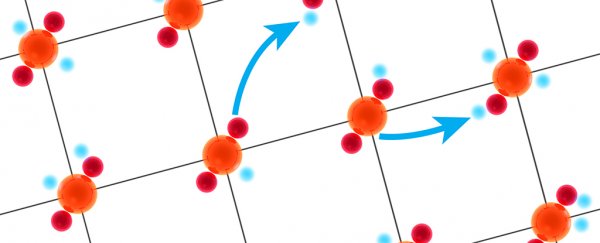Superconductivity (passing charges through materials without losing heat) promises to revolutionise electronics and power, if we can get it working at reasonable temperatures – and scientists just reported a big step forward in our understanding of the phenomenon.
The new discovery centres around the Hubbard model: a maths model of conduction and insulation in materials, which scientists have for decades thought could unlock some of the secrets of superconductivity.
Researchers have been looking for proof that this model applies to a type of high-temperature superconductivity since the 1980s, and now they have it. Simulations run by a team from Stanford University and the SLAC National Accelerator Laboratory show that superconductivity could be toggled on and off in copper-based materials called cuprates.
Further down the line, we might be able to control and produce superconductivity in cuprates on demand by "tweaking their chemistry", according to the team's findings.
"This has been a major unsolved problem in the field – does the Hubbard model describe high-temperature superconductivity in the cuprates, or is it missing some key ingredient?" says materials scientist Hong-Chen Jiang, from the SLAC National Accelerator Laboratory.
"Because there are a number of competing states in these materials, we have to rely on unbiased simulations to answer these questions, but the computational problems are very difficult, and so progress has been slow."
Getting materials to act as superconductors at temperatures above ultra-cold is a hugely tough challenge, not least because we're talking about materials in a quantum state here, where the behaviour of electrons is very difficult to predict.
The Hubbard model might give us that predictive framework we need, for understanding how high-temperature superconductors act as both conductors and insulators under very similar conditions – it's a map to navigate this quantum state maze.
By streamlining an algorithmic approach known as a density matrix renormalisation group (DMRG), the researchers finally overcome some of the existing computational problems to effectively simulate the Hubbard model in a virtual cuprate system.
This was all happening in a simulation, but the researchers saw a link between charge stripes (higher and lower electron density patterns) and superconductivity. The path that electrons took, either horizontally or diagonally across a lattice, had a bearing on whether the material became a superconductor or not.
That's a lot of high-end physics, but it essentially suggests that the Hubbard model does indeed give us a way to better understand superconductivity and to toggle it on and off by tweaking the chemistry of the materials involved.
Or at least, in simulated cuprate-based systems of this limited size – more research will be needed to confirm this happens in the real world, and on larger scales, but scientists are now well on the way.
What's more, their long-standing faith in the Hubbard model has been justified. The findings might not sound all that dramatic to those outside this field of research, but they could one day lead to perfectly efficient electric power lines and modes of transport that don't lose any energy to heat.
"The big thing you want to know is how to make superconductors operate at higher temperatures and how to make superconductivity more robust," says materials scientist Thomas Devereaux, from Stanford University in California. "It's about finding the knobs you can turn to tip the balance in your favour."
"We now have a fully interacting model that describes high-temperature superconductivity, at least for systems at the sizes we can study, and that's a big step forward."
The research has been published in Science.
